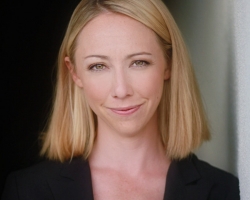When a screenwriter is working on a script idea, one of the first considerations is “who is my protagonist?” And more often than not, it’s a male. Much of the reasoning behind that choice is that a vast majority of films on the all-time top-grossing list are male-driven features. Apparently, the default hero is a man, and why take a chance on something different? But why is that the case? Is it because audiences overwhelmingly identify with male heroes or is it something else?
If one looks back into the history of cinema, the adage that teenage boys drive tickets sales hasn’t always been the case and male consumers will go see female protagonists if those characters are interesting and are set within compelling stories.
Female-driven protagonists have had their days in the sun in the movies. Studios groomed their female stars alongside their male counterparts and each had significant box-office power. This was especially true during wartime, when male audiences were overseas and the studios had to focus so-called “women’s pictures” to keep the business going. But the studio system collapsed and television was invented, targeting women in the home, and the lead female in the movies hasn’t ever quite bounced back.
Something to consider, however, is that the top grossing film of all time (adjusted for inflation) has a main character named Scarlett O’Hara, not Rhett Butler. Some of the other all-time top grossers with female protagonists include “Sound of Music,” the Disney princess movies, “Grease,” “Alice in Wonderland”Twilight” films and “The Hunger Games” and “The Girl with the Dragon Tattoo” may make this list in the near future. “Bridesmaids” was one of the highest grossing films this year. (2010), the “
It’s an oversimplification to say that audiences don’t identify with female characters. Don’t get me wrong; I understand that guys like explosions, dinosaurs and fast cars. But did you really enjoy films such as “Juno,” “Alien(s),” “Salt,” “V for Vendetta,” “True Grit,” “Wizard of Oz,” “Black Swan,” “Psycho,” “Precious,” “Kill Bill,” “Thelma & Louise,” “Doubt,” “Silence of the Lambs,” “Unfaithful” or “Million Dollar Baby” any less because they had female protagonists? Did you fail to identify with them? Would people not go see “Transformers” if it starred Mila Kunis instead of Shia Labeouf? Or are you there to see robots?
The reality is that a lot of recent films that star female protagonists just haven’t been of good quality. You don’t have a problem if you’re a man trying to “get” these characters. I don’t get them. And actually, there’s very little to get. A vast majority of these are romantic comedies starring Kate Hudson, Jennifer Aniston, Katherine Heigl or the starlet of the moment. These main characters are superficial, unrealistic and worst of all, not funny (which tends to be bad for a comedy).
Fortunately, in the past few years we’ve seen some good strides toward interesting female-driven films making good at the box office and the Oscars, so we may start seeing even more of a shift. Plus, teenage boys are increasingly fleeing to video games and downloading what they watch, and are becoming more difficult to market to.
Studio executives now are looking for the next big female raunch comedy, written by a female, and they’re even looking for female directors to helm them. I’m in the middle of a project that revolves around math and science that, if I followed “the rules,” should feature a male protagonist to fit with the target demographic. But I went with a female – and people seem to love that about it. It makes it more interesting, and nobody’s asked me to reconsider. I find that encouraging.
I don’t think we all naturally prefer male protagonists. I think people prefer the most interesting protagonist and that role has just commonly been given to the man by default. But I think the girls are gaining ground quickly.

